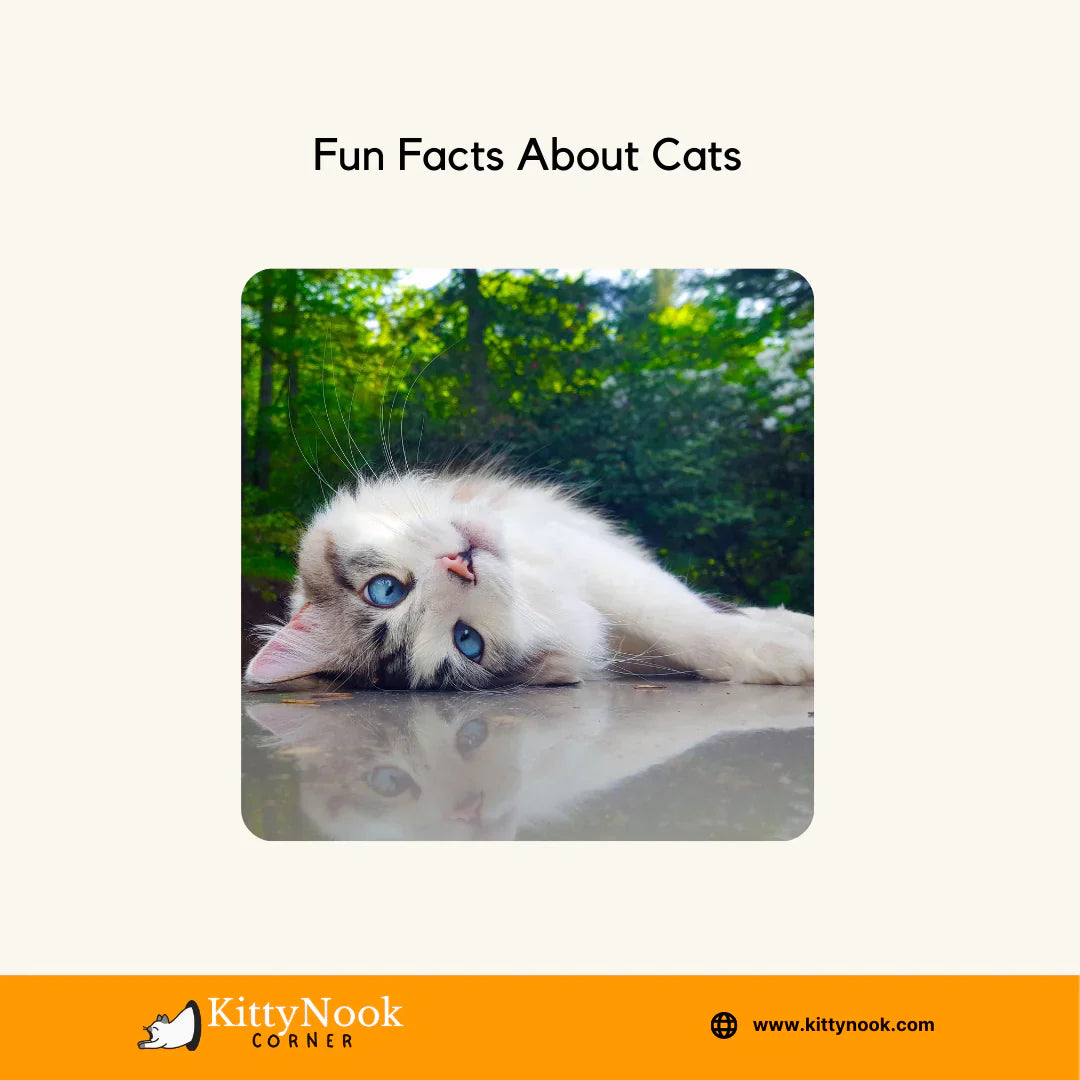Over 46 million households in the United States own cats, but there's still so much to know about them. From how they walk to the smallest cat breed, we bet you don't know some things on this list of fun facts!
Funny Facts About Cats

- Cats are scientifically proven freeloaders. While many pets choose to "work" for their food, cats will not when there is a free food option. If you give a puzzle toy and a dish, cats will likely choose the meal that requires no effort.
- Not all cats go crazy for catnip—and susceptibility to it seems to be inherited.
- Cats like small spaces because it makes them feel safer. Sleeping on boxes also keeps them warm, so they feel cozy and relaxed in boxes.
- Cats apparently get zoomies after using the litter box. Think about it as a kind of triumph lap.
- One reason scientific research on feline intelligence is deeper than dog studies is that cats are notoriously tricky subjects to test. Apparently, many cats drop out of the research by walking out of the test sites.
- For twenty years, Stubbs—a majestic orange Manx—was "mayor" of Talkeetna, Alaska, until he passed on in 2017. Today the position is in the paws of Denali, who helps advertise the unincorporated community.
Fascinating Facts About Cats

- A 9,500-year-old gravesite discovered in Cyprus exposed a human hidden with a cat. This discovery predates Egyptian art featuring cats by more than 4,000 years. It is evidence of the friendship humans have with cats.
- The Egyptian Mau is known to be the fastest domestic cat, and it can sprint approximately 30 mph.
- A feline's body has over 500 muscle mass and over 200 bones. In their tail alone, there are approximately 23 bones already!
- At only four months old, kittens can already reach reproductive maturity, meaning a female cat can get pregnant. Which is why it is so important to spay them.
- Contrary to the widespread belief that cats can't be trained, cats are, in fact, highly trainable creatures. By using positive reinforcement methods, they can learn many skills and tricks.
- Cats do not get dental caries, but this doesn't mean cats do not develop oral issues! Approximately 90% of cats more than four years of age have oral troubles. However, they don't get the sorts of dental caries that humans get, partly due to the sharp shape of cat teeth (contrasted with the level of teeth in people). Instead, felines get feline resorptive lesions, in which the dentin deteriorates, leaving them with a painful mouth. Cats likewise get gingivitis, stomatitis, and gum diseases.
- The smallest cat breed is a Singapura. They are around half the size of a typical domestic cat.
Amazing Facts About Cats

- The first and only cat to travel into space was Félicette; she was a black-and-white stray that successfully went to space in 1963.
- Cats utilize their whiskers and sensory hairs on their legs and heads to help feel their way around in dark environments.
- Felines have functioning, long and short memories like other pets and remember people.
- Cats have developed innovative communication capabilities with humans. They can follow where our finger points and know where we're looking. Skills like these help them understand us much better. They also use purrs, slow blinks, and other actions to let us know they're comfortable with and (dare we claim?) even love us.
- Feline whiskers are thicker than their normal hair and have roots that go thrice as deep. They are strategically located on the cat's face to give sensory devices to help lead a feline through the day, aiding vision and helping the cat navigate, just like antennae on bugs. Although the number of hairs will vary, most cats have 12 whiskers in four rows on each cheek.
- Cats are nearsighted but see well in the dark, thanks to those delicate hairs! Cats are nearsighted because their eyes are so large and placed so forward on their face. They can't focus on anything less than 1 foot before them. This is where the whiskers come into the equation, as they can turn them forward to feel before them.
Facts About Black Cats

- More than 20 domestic cat breeds can sport solid black coats: the Bombay, British Shorthair, American Shorthair, and Norwegian Forest Cat, among others.
- Because of the "black cat bias phenomenon," cats with black layers are adopted less frequently and are euthanized more than other shelter cats; this is why we dedicate a space to these wonderful cats whenever we can.
- Old Egyptians revered black felines due to their resemblance to the goddess Bastet.
- Black Panthers aren't a type of wild cat. This term describes the colored variant of a leopard or a jaguar. If you look closely, you can see inky spots on their bodies.
Weird Facts About Cats

- Felines move paws concurrently on one side of their body when they walk. If you look carefully, you'll notice they also place their back paw in the same spot their front paws just left. Only camels and giraffes walk in the same way as cats.
- Cats have glands in their paws that release a strong scent, offering vital information when meeting an unknown cat.
- While a feline's jaw opens up and down, it can not move from side to side.
- Felines don't taste sweetness because they do not possess the palate receptors for it. If your cat nibbles on your cake or gelato, they like the fat, not the sugar. (Btw, cats should have neither as treats, by the way).
Last Words
Are there fun facts about cats you know that we didn't mention? Something we've missed? Comment them down below!





















